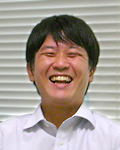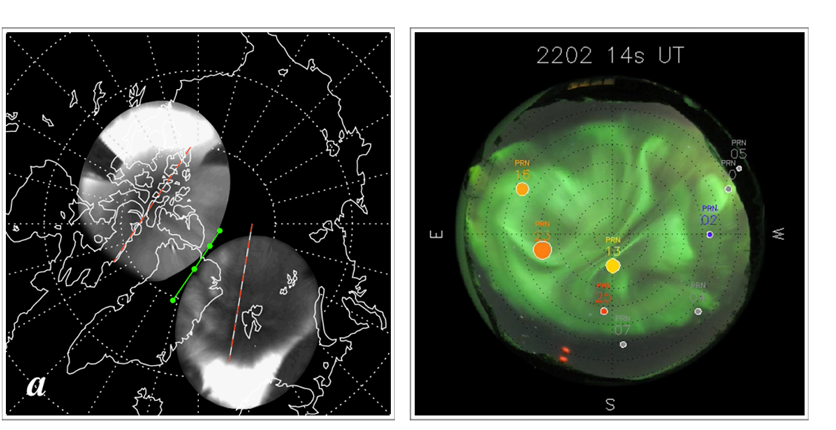December 2014 Issue
Topics
Eyes on the sky: Monitoring effects of solar activity on aurora and global positioning systems

Assistant Professor,
Department of Communication Engineering and Informatics, University of Electro-Communications, Tokyo, and Center for Space Science and Radio Engineering, University of Electro-Communications, Tokyo.
Keisuke Hosokawa is a geophysicist conducting research on the dynamics of the ionosphere. "I am interested in a wide range of topics in space physics," explains Hosokawa. "Recently, I have been monitoring the effects of fluctuations in the ionosphere on global positioning systems (GPS). Solar winds affect GPS systems, and could potentially cause chaos with aviation navigation systems. So it's an important area of research in space physics."
Hosakawa has developed 2D imaging methodology--using all sky CCD cameras (ASC) to map fluctuations of the ionosphere. "This approach yields much more information than traditional single-point radar observation methods," emphasizes Hosokawa. The core of the ASC system are CCD cameras that are cooled to approximately minus 70 degrees Celsius to reduce thermal noise. A filter between the fish eye lens and CCD chip is used to capture red light only--approximately 630 nanometeres due to ionized oxygen in the ionosphere.
Recent highlights include simultaneous observations of ionospheric scintillation during an auroral substorm on the night of 19 November 2009 in Tromsø, Norway. The substorm led to "a transient enhancement of the phase scintillation at the time of the onset of the substorm expansion phase". Also, experiment on 12 November 2013 using cameras located in Longyearbyen, Norway and Resolute Bay, Canada showed "regions of increased 630.0 nm airglow emissions.....which indicates that these are optical manifestations of polar cap patches propagating across the polar cap".
Experiments in the future include increasing the area covered by the sky cameras by using a larger number of less expensive CCD cameras.
Publication
- K. Hosokawa et al., Observations of GPS scintillation during an isolated auroral substorm, Progress in Earth and Planetary Science 1: 16, (2014).
doi:10.1186/2197-4284-1-16 - K. Hosokawa, K et al., Global imaging of polar cap patches with dual airglow imagers, Geophysics Research Letters, 41, 1-6, (2014).
doi:10.1002/2013GL058748.
Further information
- Website:
- http://gwave.ice.uec.ac.jp/~hosokawa

(Right) An all-sky auroral image taken at Tromsø, Norway, during an auroral substorm. Superimposed circles indicate the geometries of the GPS satellite, their size representing the level of fluctuations in the phase of the GPS signal received on the ground.


